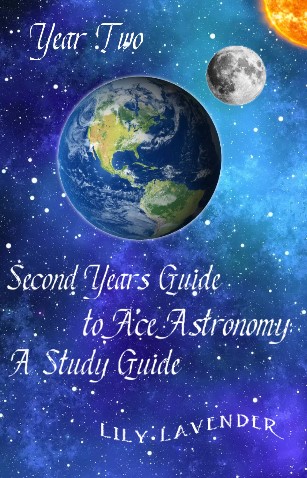Second Years Guide to Ace Astronomy: A Study Guide
By Lily Lavender
This book is intended for all who need a quick study reference guide for ASTR-201. It has a glossary of terms & its appropriate meanings for the entire course. Each chapter is based on a lesson; where it won't go into grave detail, but will give you the necessary components to study for upcoming tests & assignments. This does not include mid-term & final exams. All detailed information about each topic is in your official lessons with the Professor. DO NOT COPY AS IT IS PLAGIARISM!
Last Updated
Sept. 7, 2024
Chapters
10
Reads
640
Lesson Eight Study Guide
Chapter 9
Moons of Saturn & Its Rings
Saturn has fifty-three moons. Titan is Saturn's largest moon & orbits around the planet in sixteen days. It has an orange color that has a mixture of nitrogen & methane. Titan's methane clouds blocks out magic from entering & exiting its surface. Saturn's rings are made from blocks of water ice & rock of all different sizes & shapes. Saturn's shepherd moons consist of Daphnis, Pan, Pandora, Prometheus, & Atlas. Most often, Saturn's magical properties from within the planet & from the Sun, passes through the rings. The rings all have a form of gravity, which is why they all stay in their rings.
Moons of Uranus & Neptune
Uranus has twenty-seven moons. Titania & Oberon is Uranus's biggest moons. Titania is the eighth biggest moon in the solar system. These two moons are so big in size that they were discovered in the eighteenth century, before technology was invented. Uranus's biggest moons consist of Umbriel, Oberon, Titania, Miranda, Puck, & Ariel. They are all covered by water ice & rock. All moons mirror magic towards Uranus, some mirroring less & some mirroring more. Neptune has fourteen moons. Triton is Neptune's biggest moon, with Proteus being the second biggest. Triton orbits Neptune in five days & twenty-one hours, but it orbits backwards. It's made up of methane, water, nitrogen, & carbon dioxide. It also has geysers which shoots out liquid nitrogen. Triton is large enough to mirror its magic towards Neptune.



